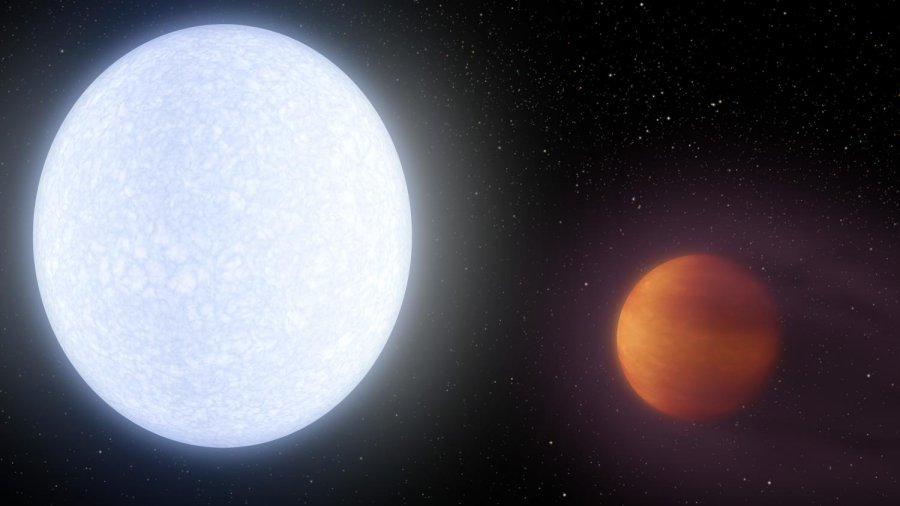KELT-9b: Extreme Alien World Hotter Than Most Stars Discovered In Constellation Cygnus

An international research team led by astronomers at Ohio State and Vanderbilt universities, have found an alien world orbiting a massive star they have named KELT-9, which is located 650 light years from Earth in the constellation Cygnus.
The planet is a gas giant 2.8 times the mass of Jupiter but only half as dense, because the extreme radiation from its host star has caused its atmosphere to puff up like a balloon.
On this planet, temperature reaches 4,600 Kelvin (around 4,327 degrees Celsius), which means it is only 1,200 Kelvin (930°C) cooler than our own sun.
Researchers say that the ultraviolet radiation from the star it orbits is so brutal that the planet may be literally evaporating away under the intense glare, producing a glowing gas tail.
See also:
Gas Giant Puffy Planet With Extraordinarily Thick Atmosphere Discovered
Solar System Similar To Our Own Discovered In Constellation Eridanus
Giant Mystery Wave Spotted In Atmosphere Of Venus
More About Astronomy
“It’s a planet by any of the typical definitions based on mass, but its atmosphere is almost certainly unlike any other planet we’ve ever seen just because of the temperature of its day side,” said Scott Gaudi, professor of astronomy at The Ohio State University in a press release.
The reason the exoplanet is so hot is because the star it orbits is more than twice as large and nearly twice as hot as our sun.
“KELT-9 radiates so much ultraviolet radiation that it may completely evaporate the planet. Or, if gas giant planets like KELT-9b possess solid rocky cores as some theories suggest, the planet may be boiled down to a barren rock, like Mercury,” said Keivan Stassun, Stevenson Professor of Physics and Astronomy at Vanderbilt, involved in the research.
On the other hand, the planet’s orbit is extremely close to the star so if the star begins to expand it will engulf it.
“KELT-9 will swell to become a red giant star in about a billion years,” said Stassun. “The long-term prospects for life, or real estate for that matter, on KELT-9b are not looking good.”
Astronomers are searching for Earth-like planets around smaller and cooler stars like our sun because these planets can have a potential to be habitable. Extreme, bizarre celestial bodies such as KELT-9b most probably cannot have any life.
However, astronomers Stassun and Gaudi believe that it is a great opportunity to study KELT-9b’s host star, which is bigger and hotter than the sun, because it creates an opportunity to better understand how planetary systems form around hot, massive stars.
Research



 Creators of mankind
Creators of mankind Description of “Tall white aliens”
Description of “Tall white aliens” Where they came from?
Where they came from? About hostile civilizations
About hostile civilizations The war for the Earth
The war for the Earth “Tall white aliens” about eternal life
“Tall white aliens” about eternal life Video: “Nordic aliens”
Video: “Nordic aliens” Aliens
Aliens Alien encounters
Alien encounters The aliens base
The aliens base UFO
UFO Technology UFO
Technology UFO Underground civilization
Underground civilization Ancient alien artifacts
Ancient alien artifacts Military and UFO
Military and UFO Mysteries and hypotheses
Mysteries and hypotheses Scientific facts
Scientific facts


















